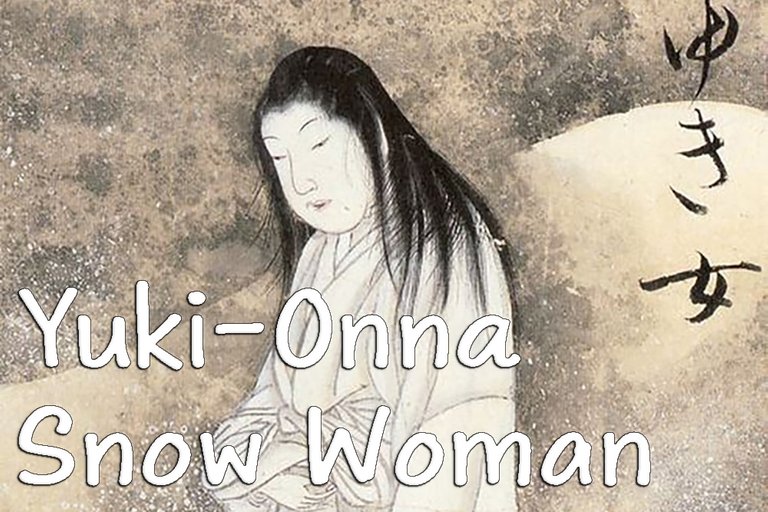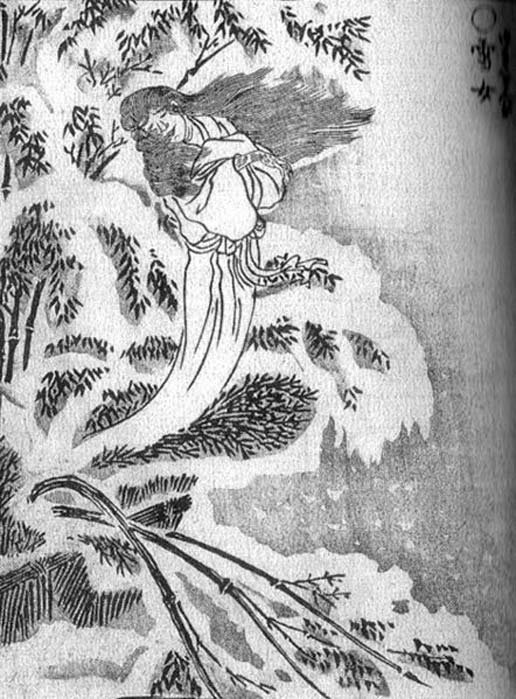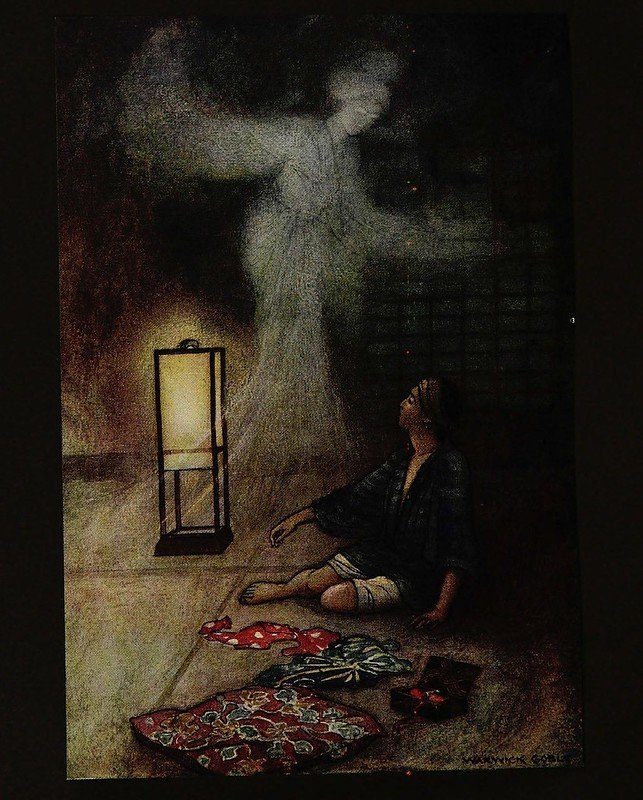Around Halloween last year I wrote a few posts introducing various Japanese urban legends. I was planning on more, but I grew bored of the topic and moved on. Today I want to return to it and introduce you to a winter based folklore. Today let's talk about Yuki Onna.


Yuki Onna (雪女), or "snow woman", is a yokai that shows up in a great many stories. She is a beautiful woman, with long black hair, a pale skin that looks of snow, and usually wearing a white kimono.
Stories with Yuki Onna are so numerous that we could fill an entire book with them. One of the most well known versions was the one Lafcadio Hearn wrote. His version was based on several versions in Japan, translated for him by his wife (he didn't know any Japanese), and published in "Kwaidan" in 1903. It was later made into two films in Japan and the basic story has shown up in several American movies.

1737 depiction of Yuki-onna from the Hyakkai-Zukan by Sawaki Suushi // public domain, via Wikipedia
His story goes that one day two woodcutters were stranded in the mountains because of a snowstorm. With night approaching, they found an old hut and decided to wait out the storm there. During the night, one of them awoke and saw a beautiful woman in white breathing on the other, who was frozen to death. She started to approach him but then paused and said she wouldn't kill him because he was young and beautiful, but she warned that he must never tell about the incident.
Some time later the woodcutter met a beautiful young woman named O-yuki. They fell in love, married, and had several children. They lived happily. O-yuki was a good wife but mysteriously, she never seemed to age.
One night after the children were asleep, the woodcutter was watching her and told he that she always reminded him of a strange beautiful ghost he had once seen. And he told of his meeting with Yuki-Onna. Suddenly, O-yuki stood up and screamed, "That woman you met was me!". She went on to tell him that she promised death if he ever spoke of the incident, but for the sake of their children she would spare him. She then told him to care for them and disappeared.
You can read Kaidan here. Yuki Onna is the 11th story in the book.


Yuki-onna Floating Away // Public domain, Via Wikipedia
In most tales she is not as forgiving as she was with the woodcutter of Hearn's version. Usually she appears to people trapped in snow storms and she kills them with her icy breathe. In this way, she may be something like the grim reaper, as people lost in the snow were probably doomed no matter what.
In some areas of Japan tales of her painted a much more aggressive spirit, making her more of a snow vampire who feeds on the vital energy of humans, freezing them to death as she sucks it up.
In still other tellings, she is a vengeful ghost of a woman who was tricked and murdered. That one has much in common with other female Japanese ghosts, the majority of whom are vengeful spirits, full of anger and hatred and taking it out on all of humanity.
But they aren't all full of evil. Sometimes tellings of Yuki Onna are instead sorrowful. There are several versions of one where she visits an old childless couple one night. The couple becomes overjoyed because they finally have a child to take care of. She lives with them for a time and brings them joy. But then these tales usually end when one of the old couple notices something odd about her one day and she vanishes in a puff of snow.


Yuki-onna Before Young Man // public domain, via Flickr
As mentioned above, she is usually in a white kimono with long black hair. This is the traditional way female ghosts are depicted in Japan. A white kimono is the burial kimono, and the long black hair is because women traditionally great their hair very long and then bound it up during the day in something of the hairstyle you see women wearing in samurai dramas. Yuki Onna also often borrows the again traditional ghost look by floating around with withered arms held up, hands dangling lifelessly.
The first mention we have of her dates from Sōgi. You may find his name familiar, as I've shared his poetry before. He wrote many of what we would consider haiku today, and he was one of the most popular poets of his day.
According to him, one day outside him home near the end of winter he spotted a beautiful young woman standing near a bamboo grove. He was mesmerized by her beauty and asked who she was. She ignored him and walked silently towards his garden. As he watched, she dissolved into snow.
The next day Sōgi told others in town about the episode. He received a lot of knowing nods and was told about the legend of Yuki Onna.
Since that time she has gone on to be one of the most well-known yokai inside and outside Japan.

I'll close with this video I found. It is using the Hearn version that I shared above. Unfortunately there are no English subtitles, but now that you know the story you should be able to follow along easily enough. See what you think.
❦
 |
David LaSpina is an American photographer and translator lost in Japan, trying to capture the beauty of this country one photo at a time and searching for the perfect haiku. |

